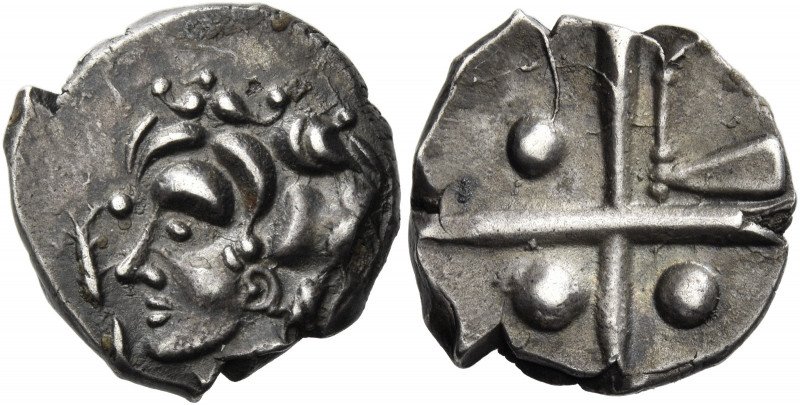
Ancient Celtic Coins
The Significance of Ancient Celtic Coins: Art, Culture, and History
Ancient Celtic coins are more than just currency—they are windows into the vibrant and enigmatic world of the Celtic tribes. These coins, minted between the 4th century BCE and the 1st century CE, are renowned for their intricate designs, cultural symbolism, and historical importance. This article explores the significance of ancient Celtic coins, their artistic value, their role in Celtic society, and their enduring legacy in the world of numismatics. Whether you’re a history enthusiast, an art lover, or a coin collector, this guide will deepen your appreciation for these remarkable artifacts.
Introduction: Who Were the Celts?
The Celts were a diverse group of tribal societies that flourished across Europe during the Iron Age. Known for their warrior culture, advanced metallurgy, and rich artistic traditions, the Celts left behind a legacy that continues to captivate historians and collectors alike. Among their most enduring contributions are their unique and beautiful coins.
The Artistic Significance of Celtic Coins
Intricate and Abstract Designs
Celtic coins are celebrated for their abstract and highly stylized designs, which set them apart from the more realistic depictions found on Greek and Roman coins. Common motifs include:
- Animals: Horses, boars, and birds, often depicted in dynamic poses.
- Human Figures: Stylized warriors, deities, and mythological beings.
- Geometric Patterns: Spirals, crescents, and other intricate patterns that reflect the Celts’ artistic sensibilities.
Cultural Symbolism
The designs on Celtic coins were not merely decorative—they carried deep cultural and spiritual significance. For example:
- Horses: Symbolized power, speed, and the divine.
- Boars: Represented strength, courage, and fertility.
- Suns and Crescents: Reflected the Celts’ reverence for nature and celestial bodies.
Regional Variations
Celtic coins varied widely across different tribes and regions, offering a glimpse into the diversity of Celtic culture. For instance:
- Gaulish Coins: Often featured stylized heads and horses.
- British Coins: Included intricate patterns and abstract designs.
- Iberian Coins: Showcased unique motifs influenced by local traditions.
The Historical Significance of Celtic Coins
A Reflection of Celtic Society
Celtic coins provide valuable insights into the social and political structures of Celtic tribes:
- Tribal Identity: Coins often bore the names or symbols of specific tribes, serving as a form of tribal identity.
- Economic Systems: The production and distribution of coins indicate the existence of complex trade networks and economic systems.
- Political Power: Coins were often minted by chieftains or rulers to assert their authority and fund military campaigns.
Interaction with Other Cultures
Celtic coins also reflect the interactions between the Celts and neighboring civilizations:
- Greek and Roman Influence: Early Celtic coins were inspired by Greek and Roman designs, but the Celts quickly developed their own distinctive style.
- Trade and Diplomacy: Coins were used in trade with other cultures, facilitating cultural exchange and economic growth.
The Numismatic Significance of Celtic Coins
Rarity and Collectibility
Celtic coins are highly prized by collectors for their rarity and artistic beauty. Key factors that make them desirable include:
- Unique Designs: No two Celtic coins are exactly alike, making each piece a one-of-a-kind treasure.
- Historical Value: These coins offer a tangible connection to the ancient Celtic world.
- Investment Potential: High-quality Celtic coins can appreciate significantly in value over time.
Challenges in Collecting
Collecting Celtic coins can be challenging due to:
- Counterfeits: The market is rife with fake Celtic coins, so authentication is crucial.
- Condition: Many Celtic coins are found in poor condition due to their age and the materials used.
- Availability: Genuine Celtic coins are rare and often command high prices.
How to Identify and Authenticate Celtic Coins
Key Features to Look For
- Design Elements: Look for the abstract and stylized motifs characteristic of Celtic coins.
- Material: Most Celtic coins were made of gold, silver, or bronze.
- Weight and Size: Celtic coins vary in size and weight, but they are generally smaller and lighter than Greek or Roman coins.
Consulting Experts
If you’re unsure about a coin’s authenticity, consult a professional numismatist or use services like NGC Ancients for authentication.
The Legacy of Celtic Coins
Influence on Modern Art and Design
The abstract and intricate designs of Celtic coins have inspired artists and designers for centuries. Their motifs can be seen in everything from jewelry to tattoos.
In Popular Culture
Celtic coins have appeared in movies, TV shows, and video games, often as symbols of mystery and ancient power.
In Numismatics
For collectors, Celtic coins represent the pinnacle of ancient artistry and craftsmanship. They are a testament to the creativity and ingenuity of the Celtic people.
Conclusion: The Timeless Appeal of Celtic Coins
Ancient Celtic coins are more than just pieces of metal—they are masterpieces of art, symbols of cultural identity, and windows into a fascinating world. Their intricate designs, historical significance, and enduring legacy make them a cherished part of numismatic history. Whether you’re a collector, a historian, or simply someone who appreciates beauty, Celtic coins offer a unique and captivating glimpse into the past.
Leave a Reply